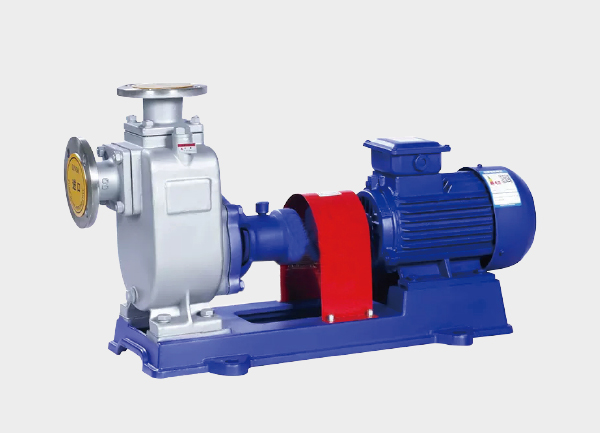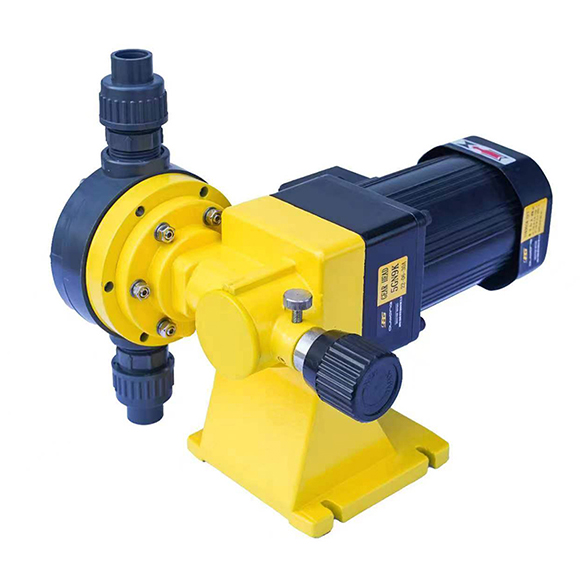Vertical pumps are critical components in industrial production, municipal water supply, and process systems. When a vertical pump fails to deliver water, it can cause serious issues such as production downtime, process interruption, and reduced operational efficiency.
To solve this problem effectively, the root cause must be identified from three key dimensions: suction system, pump body, and drive transmission. Below is a detailed analysis of possible reasons and troubleshooting methods.

1. Suction Side Issues – Failure to Create Negative Pressure
The suction side is the first stage for the vertical pump to draw liquid.
If it cannot form an effective vacuum (negative pressure), the pump will not be able to pull and deliver water.
Common suction-related causes include:
(1) Suction Pipe Blockage or Poor Flow
Cause:
Over time, the suction pipeline may accumulate scale, sediment, fibers, or debris, reducing or blocking the flow area.
Partially closed or stuck valves (such as a gate valve jam or butterfly valve misalignment) can also restrict flow.
Symptoms:
Abnormal humming or vibration noise during operation
Suction pressure gauge reading below normal or zero
Check & Solution:
Stop the pump and disconnect the suction flange or strainer
Inspect for blockages and ensure all valves are fully open and operating freely
(2) Air Leakage in Suction Pipeline
Cause:
Leaking seals or cracks at joints (flanges, threaded fittings, welds), or poor sealing between the suction pipe and pump casing allow air to enter the line.
Symptoms:
“Sucking” noise from suction line
Pressure gauge fluctuating rapidly
No water discharge, only air released from vent valve after shutdown
Check & Solution:
Apply soap solution or submerge joints under water while running to detect air bubbles
Replace aged or damaged gaskets and tighten all joints
(3) Low Suction Level or Air Lock (Vapor Lock)
Cause:
The liquid level is below the pump’s minimum NPSH (Net Positive Suction Head) requirement, so the inlet is exposed to air.
Residual air trapped inside the pump prevents effective suction — a condition known as air binding or vapor lock.
Symptoms:
“Dry running” sound at suction side, zero discharge
Motor runs normally but discharge pressure remains zero
Check & Solution:
Ensure the liquid level meets or exceeds the pump’s required minimum suction height
Open the air vent valve on the pump casing until a steady stream of water flows out before restarting
2. Internal Pump Faults – Flow Channel or Pressure Failure
The pump body is the core section that pressurizes and transfers fluid.
Any internal mechanical or hydraulic issue can cause flow interruption.
(1) Impeller Failure (Blockage, Damage, or Loosened Connection)
Cause:
Impeller passages clogged by debris (e.g., small stones, plastic pieces)
Impeller blades worn, cracked, or broken due to abrasive media
Impeller hub loosened or key sheared, preventing rotation with the shaft
Symptoms:
Severe vibration, sudden drop in discharge pressure
After disassembly: clogged channels, deformed blades, or loose impeller
Check & Solution:
Disassemble pump casing
Inspect impeller flow passages and ensure tight shaft connection
(2) Cavitation – Disrupted Fluid Continuity
Cause:
Excessive suction resistance (pipe too narrow, too many elbows)
Fluid temperature too high, raising vapor pressure
Pump installation height exceeding allowable NPSH
When suction pressure drops below vapor pressure, vapor bubbles form and collapse violently, causing damage and unstable flow.
Symptoms:
“Crackling” or “popping” cavitation noise
Honeycomb pits on impeller surface
Fluctuating discharge flow and pressure
Check & Solution:
Verify actual suction resistance and compare with design values
Check fluid temperature and installation height against NPSH requirements
3. Power and Transmission Faults – Lack of Effective Drive
If the motor or coupling components fail, the impeller will not reach the required speed, resulting in little or no flow.
(1) Motor Running in Reverse
Cause:
Incorrect three-phase wiring sequence (phase reversal) causes the motor to rotate backward.
Since vertical pump impellers are unidirectional, reverse rotation fails to create discharge pressure.
Symptoms:
Motor runs normally but no suction or discharge
No excessive heat buildup on motor casing
Check & Solution:
Swap any two power supply phases and restart
Observe if water discharges normally
(2) Low Motor Speed or Overload
Cause:
Low voltage (below 90% of rated voltage) reduces output torque
Motor bearing failure or stator winding short circuit causes overload
Symptoms:
Loud noise, overheating, high current draw
Discharge flow and pressure far below rated performance
Check & Solution:
Measure supply voltage with a multimeter
Inspect motor bearings and windings for wear or burn marks
(3) Transmission Component Failure (Coupling or Shaft Damage)
Cause:
Worn or broken elastic coupler pads, loose bolts, bent or fractured pump shaft
Power cannot transfer efficiently to the impeller
Symptoms:
Unusual knocking or rubbing sounds
Excessive vibration
On inspection: damaged coupler or bent shaft
Check & Solution:
Tighten coupling bolts and replace worn parts
Measure shaft runout using a dial indicator
4. Summary
The main causes of a vertical pump not pumping water usually fall into three categories:
Suction side issues: air leakage or blockage
Internal failures: impeller damage or cavitation
Drive faults: motor or coupling malfunction
When troubleshooting, always follow the principle of “from outside to inside, from simple to complex.”
Start with easy checks — liquid level, valve position, and motor rotation — before moving to internal inspection of the impeller, seals, and transmission parts.
Timely diagnosis and repair can significantly reduce downtime and ensure stable, efficient vertical pump operation.







